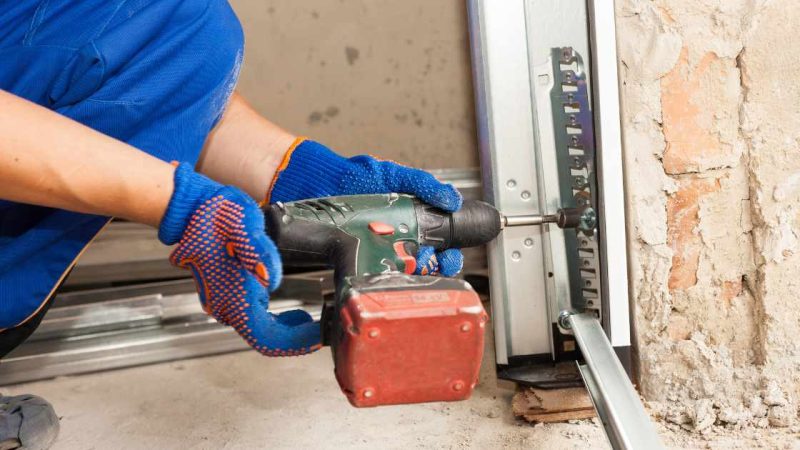Replacing garage door springs can be a challenging task, but with proper tools, safety precautions, and guidance, it can be done successfully. This guide will walk you through the process step-by-step.
Why Replacing Garage Door Springs Is Important
Garage door springs play a crucial role in counterbalancing the weight of the door, making it easy to open and close. Over time, these springs can wear out or break due to tension and repeated use. Replacing them ensures the door operates smoothly and safely.
Types of Garage Door Springs
Torsion Springs
Located above the garage door.
Wind up to store energy, which assists in lifting the door.
Extension Springs
Positioned along the sides of the door tracks.
Stretch and contract to support door movement.
Understanding the type of spring you have is vital before starting the replacement process.
Tools and Materials Needed
Replacement springs (torsion or extension)
Adjustable wrench
Locking pliers
Winding bars (for torsion springs)
Socket set
Safety goggles
Gloves
Ladder
Tape measure
Marker or chalk
C-clamps or vice grips
Safety Precautions Before Starting
Disconnect Power – Unplug the garage door opener.
Secure the Door – Use C-clamps to keep the door in place.
Wear Safety Gear – Gloves and goggles protect against injuries.
Work with a Partner – Extra help ensures added safety.
Step-by-Step Instructions for Torsion Springs
Step 1: Measure the Existing Spring
Measure the length, inside diameter, and wire size of the existing spring to ensure you purchase the correct replacement.
Step 2: Secure the Garage Door
Clamp the garage door to the track using C-clamps or vice grips to prevent movement.
Step 3: Loosen the Broken Spring
Insert winding bars into the winding cone of the spring.
Loosen the set screws using an adjustable wrench while keeping firm control of the winding bar.
Step 4: Unwind the Old Spring
Carefully unwind the broken spring using winding bars.
Repeat the process on the other side if there are two springs.
Step 5: Remove the Old Springs
Detach the springs from the center bracket.
Slide the springs off the torsion bar.
Step 6: Install New Springs
Slide the new springs onto the torsion bar.
Attach them to the center bracket.
Step 7: Wind the New Springs
Use winding bars to wind the springs to the appropriate tension (check manufacturer’s instructions).
Tighten the set screws to secure the springs.
Step 8: Test the Door
Remove the clamps or vice grips.
Slowly lift the door manually to test the tension.
Reconnect the opener and test it electronically.
Step-by-Step Instructions for Extension Springs
Step 1: Secure the Door
Clamp the door to the track to prevent it from opening during the process.
Step 2: Remove the Safety Cables
Unhook the safety cables that run through the springs.
Step 3: Detach the Old Springs
Loosen the bolts and remove the extension springs from the brackets and pulley system.
Step 4: Install New Springs
Attach the new springs to the brackets and pulley system.
Ensure the safety cables are properly threaded through the new springs.
Step 5: Adjust Tension
Check the tension to make sure the door operates smoothly.
Step 6: Test the Door
Remove the clamps and test the door manually and with the opener.
Common Mistakes to Avoid
Using Incorrect Spring Size – Always measure before purchasing replacements.
Improper Winding – Incorrect winding can lead to poor operation or accidents.
Skipping Safety Steps – Failure to secure the door or wear protective gear can lead to injuries.
Not Testing Tension – Always test door balance and operation after replacing springs.
When to Call a Professional
If you are uncomfortable handling high-tension springs or lack the required tools, it’s best to hire a professional. Attempting this repair without experience can lead to serious injuries.
Maintenance Tips for Longer Spring Life
Lubricate the springs regularly with garage door lubricant.
Inspect for signs of wear, such as rust or gaps in the coils.
Test the balance of the door periodically by disconnecting the opener and lifting the door manually.
Replace both springs if one breaks, as they wear out at the same rate.
FAQs
How do I know if my garage door springs are broken?
If your garage door won’t open, opens unevenly, or makes loud noises, the springs may be broken. Visually inspect the springs for gaps or damage.
Can I replace garage door springs myself?
Yes, but it requires proper tools, safety precautions, and following instructions carefully. If unsure, consider hiring a professional.
How often should garage door springs be replaced?
Garage door springs typically last 7-9 years with normal use. Replace them sooner if signs of wear, rust, or stretching appear.
Final Thoughts
Replacing garage door springs requires patience, precision, and adherence to safety measures. By following this guide, you can restore your garage door to proper working condition. Regular maintenance and inspections can extend the life of your springs and prevent sudden failures. If you need additional help, don’t hesitate to contact a professional garage door technician.

